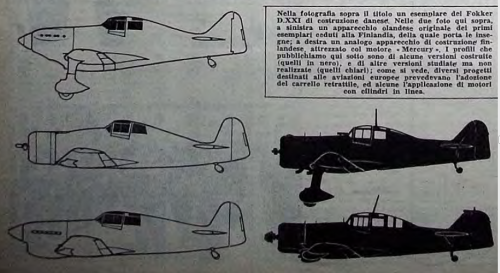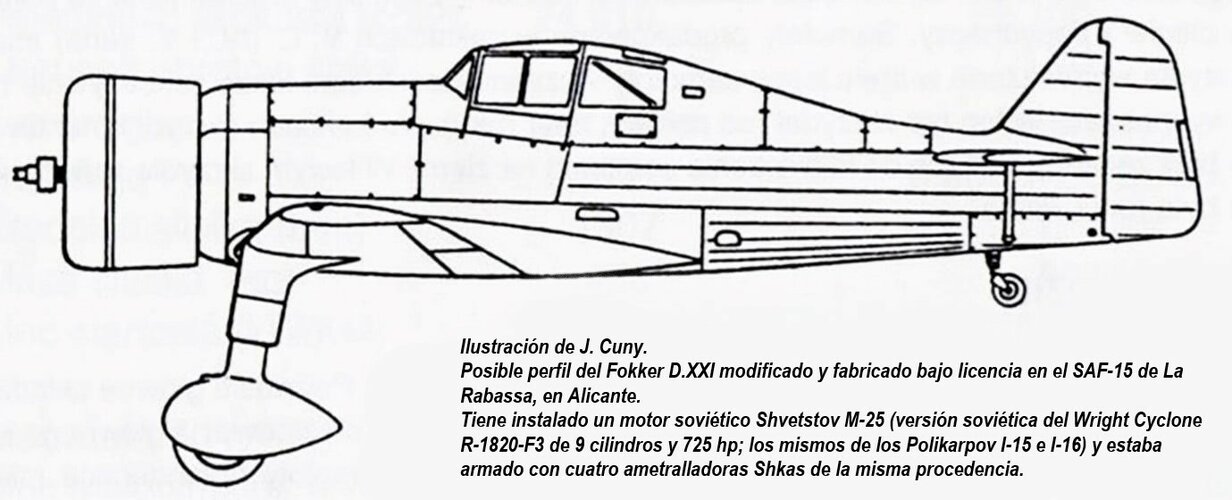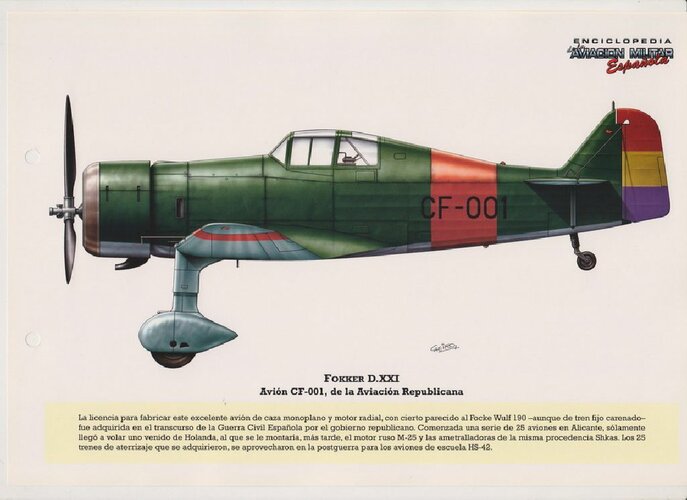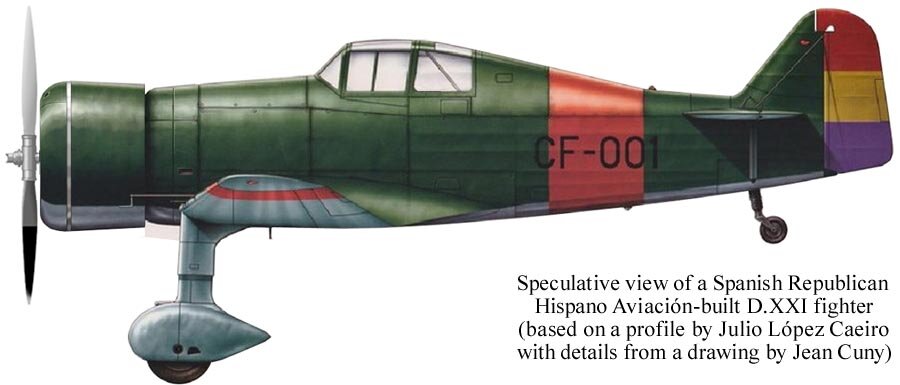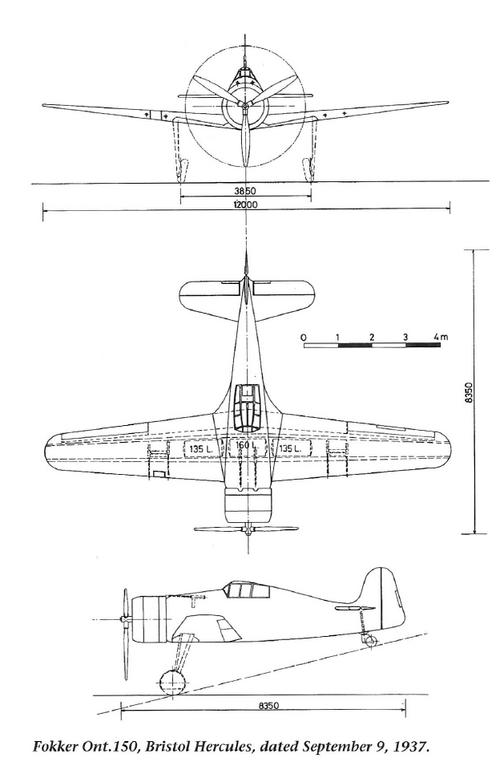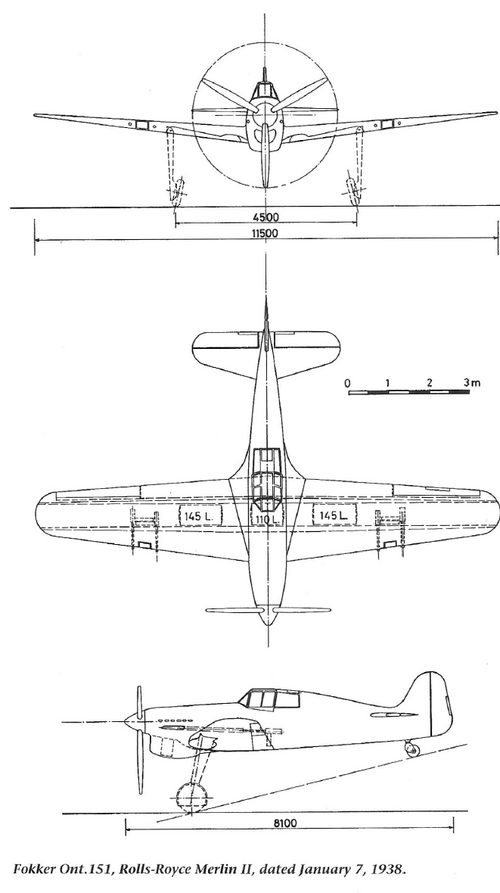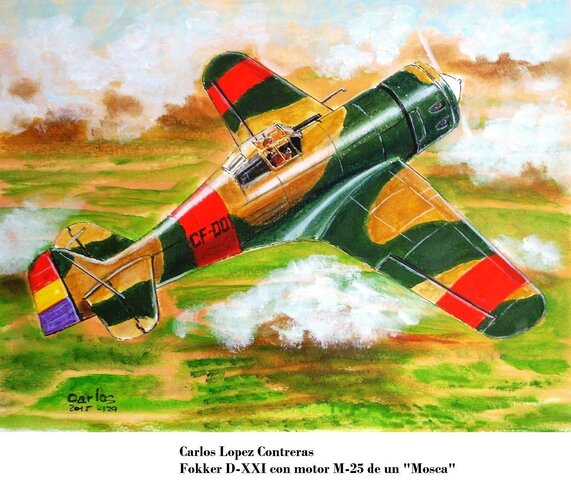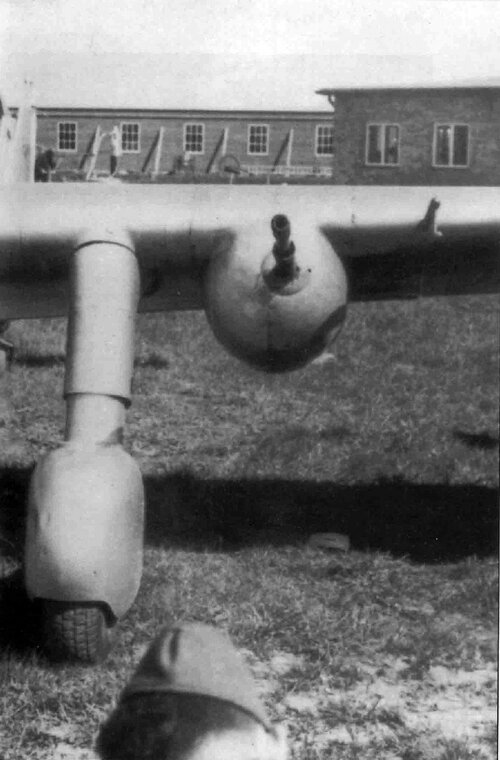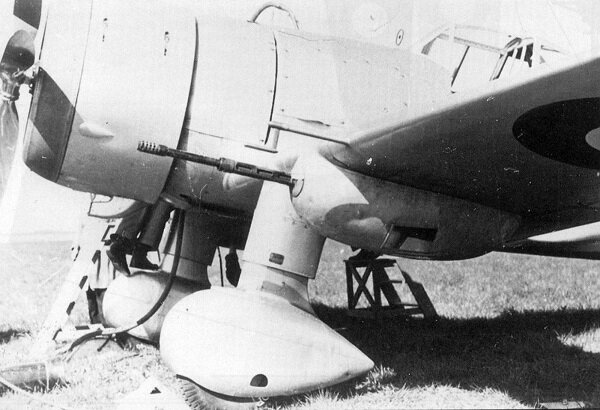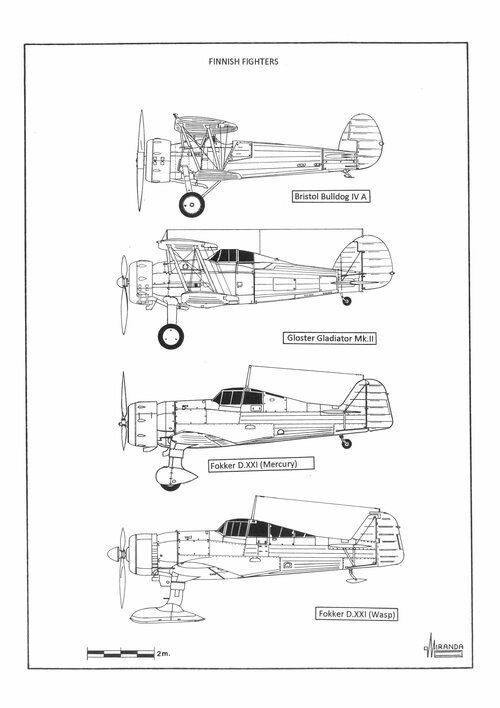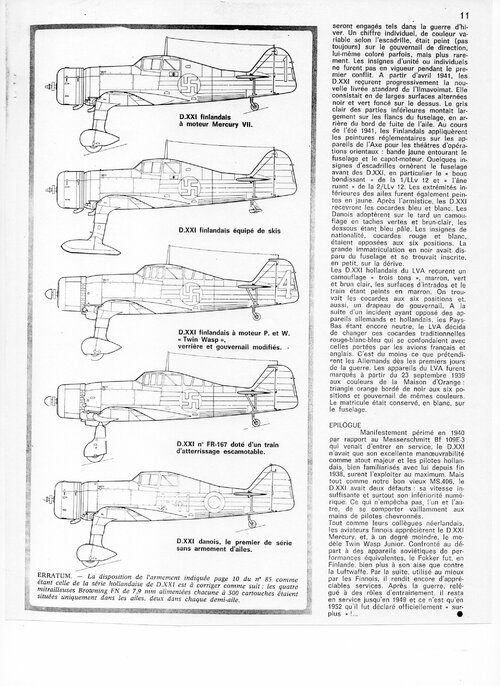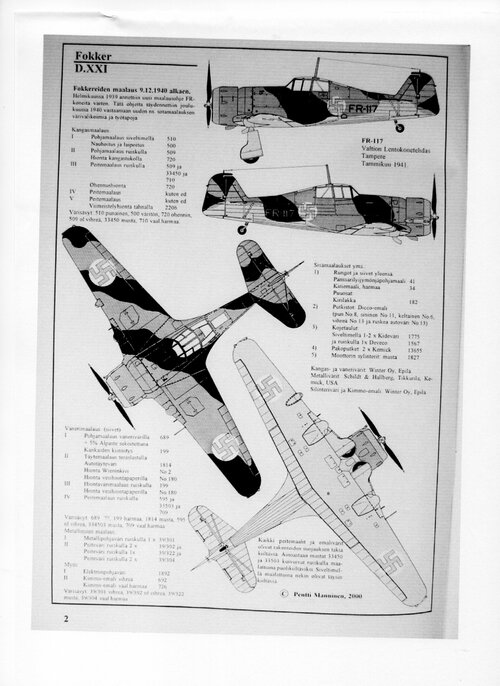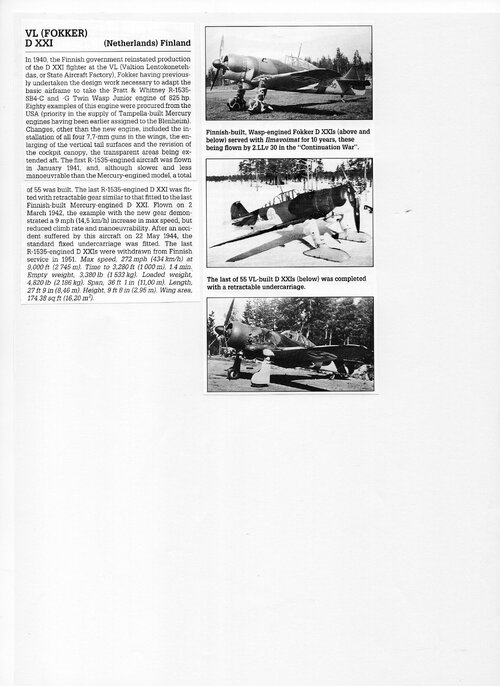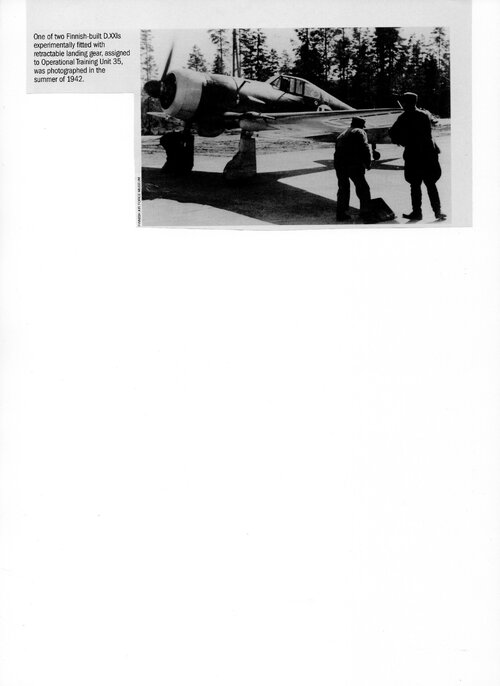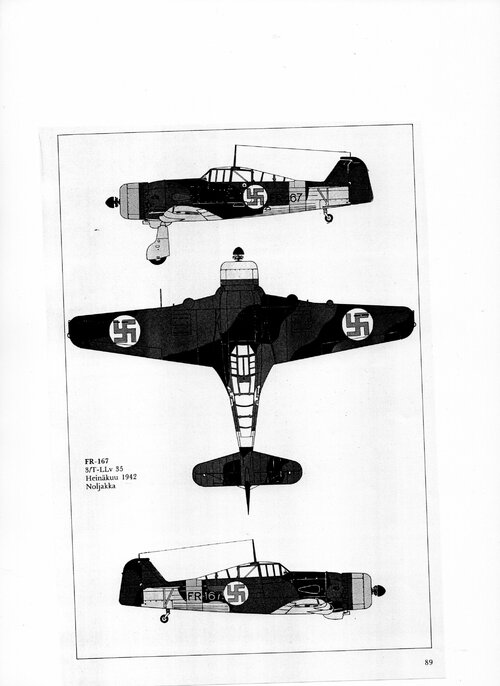lucamax
ACCESS: Secret
Dear Arjen,
thank you for your help!
Best regards.
--
Lucamax
thank you for your help!
Best regards.
--
Lucamax
Arjen said:The Shvetsov M-25 was a licence-built Wright R-1820 Cyclone. The Spanish Hispano-Suiza plant also had a licence to build R-1820s as the H-S 9V.lucamax said:Dear friends,
I read about a Fokker D.XXI modified by spanish republican forces with a Shvetstov M-25 engine: have you more info about that?
According to the book "Aircraft of the Spanish Civil War - Gerald Howson", it was tested by Mario Palacios in the presence of the Gen Emilio Herrera.
Thanks a lot.
P.S. Merry Christmas to all!
--
Lucamax
I have had a look at the appropriate chapter in Fokker D.21 - Fokkers laatste eenmotorige jager by Peter de Jong, Violaero 2012. This is what I found.
In 1937, Fokker and the Spanish Republic had arranged for licence-production in Spain of 25 C.10 scouts and 50 D.21 fighters. Fokker's head office in Amsterdam had made drawings for an R-1820-powered D.21 as part of this deal, presumably because of the availability of licence-built R-1820s. Peter de Jong writes that the single Spanish D.21 was probably assembled from locally made parts, so this was not a matter of an existing aircraft modified to accept the R-1820. It was a new build R-1820-/M-25-powered aircraft, with drawings supplied by Fokker.
The Spanish Fokkers were to be built in the Hispano-Suiza factory in Guadalajara, near Madrid. However, with the Civil War breaking out, the Spanish Republic moved all of Hispano-Suiza's and AISA's work force and machinery to La Rabasa airfield near Alicante. Both companies were nationalised in June 1937, with AISA becoming SAF-1 and H-S becoming SAF-5 - SAF being the Spanish acronym for Aeronautical Maintenance and Production Facility. The two facilities were then merged into SAF-15, under commandante Andrés Pitarch. The same facility also made Polikarpov I-16s, production of which took precedence over the Fokkers. At some time in 1937, La Rabasa was bombed by the Nationalists. Damage was more psychological than physical, but it was decided anyway to move production to the surrounding villages. The D.21 found a home in the Monasterio de la Santa Faz, which had been cleared of its population by the Republic - it had a problematic relation with the Spanish Roman Catholic Church which tended to side with the Nationalists.
De Jong writes the Spanish D.21s were to use Soviet equipment: four 7.62mm ShKAS machine guns and a Shvetsov M-25. De Jong writes it is unclear which engine was fitted in the D.21 when it rolled out of the monastry in August 1938: M-25 or R-1820. Test flights were conducted in October 1938, from Los Alcazáres-El Carmoli airfield. The pilot was Mariano Palacios Palomar, chief-instructor of the airfield's flying school. The aircraft carried the registration CF-001.

